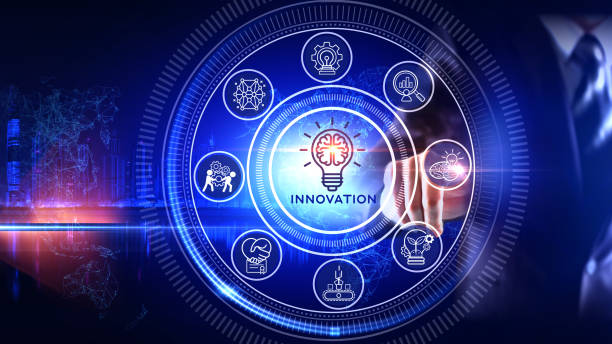Traditionally, logistics has been the backbone of trade and commerce, progressing from basic interventions to the sophisticated systems we see today. The Logistics Technology has been positively impacted by technology which facilitates efficiency, accuracy, and speed. Particularly, This article takes you through Giant steps in logistics technology, Going from the old days of logistics to the current state of the Logitech .
The Early Days of Logistics
Logistics in its most basic sense originated in ancient civilizations. The Egyptians and Mesopotamians were among the first to establish systematic procedures for the transport and storage of goods. Be warned, technology was rudimentary, (though the wheel was invented around 3500 BCE), so that’s not the best measurement. The wheel changed the face of transportation, allowing heavier loads to be transferred over greater distances.
The other big breakthrough has been in maritime logistics. The Phoenicians and Greeks, in ancient civilizations, built ships to carry goods over oceans, leading to intercontinental trade. These early innovations set the stage for the logistics systems of today.
The Industrial Revolution: A Turning Point
The industrial revolution (1760–1840) was a key moment in logistics technology. The introduction of mechanized production and new modes of transportation transformed supply chains. Railways, steamships and canals were essential to the transportation of goods, slashing transit times and costs.
A breakthrough came in 1765, when James Watt invented the steam engine. It powered trains and ships, allowing goods to cross continents and oceans at such speed. It was during this time that warehouses began to emerge, allowing for the efficient storage and distribution of items. One of the first mechanized tools to appear was the conveyor belt, which made the process more efficient.
The 20th Century: Automation and Globalization


The 20th century brought an age of automation and globalization propelled by technology, improved international trading relations, etc. Some key milestones from this period include:
-
The Advent of Motorized Transport
The advent of automobiles and the construction of roads changed last-mile delivery. The flexibility and accessibility offered by trucks soon meant that they were the transport mode of choice for goods. By the middle of the 20th century, UPS and FedEx were already paving the way for the modern delivery services.
-
The Rise of Air Freight
Containerization, pioneered by Malcolm McLean in the 1950s, transformed the shipping industry. The standardized containers allowed goods to be moved readily between ships, trains and trucks. This innovation made handling much faster and cheaper, and helped global commerce grow.
-
The Introduction of Containerization
Malcolm McLean’s containerization literally rocked the shipping world starting back in the 1950s. Standardized containers made it easy to transfer goods between ships, trains and trucks. This led to a sea change in how trade was exported and imported by reducing handling times and costs significantly and booosting global trade.
-
Early Computerization
During the 1960s and 1970s, computerized systems for inventory management and order processing were developed. The first generation of Enterprise Resource Planning (ERP) emerged, consolidating logistics functions within a single platform. The introduction of barcodes and scanners in the 1970s also improved accuracy and efficiency in tracking goods.
The Digital Era: Transformative Innovations

If the late 20th and early 21st centuries can be described as the digital revolution for logistics, technology, then the 21st century is more like trying to build Integrated Logistics Technology 4.0. Key innovations include:
-
The Internet and E-Commerce
The introduction of the internet in the 1990s revolutionized logistics. Shopping and delivery were revolutionized with the emergence of e-commerce platforms such as Amazon and Alibaba. Standardized real-time tracking and online order management also improved customer satisfaction.
-
GPS and Route Optimization
The Global Positioning System (GPS) began to come into widespread use in the 1990s. GPS tracking was used in logistics companies for route optimization, reducing delivery time and fuel cost. And, now, dynamic routing systems are powered by Advanced algorithms and Artificial Intelligence (AI).
-
Automation and Robotics
Simply put, the integration of logistics with automated systems and robotics has become a must. Automated guided vehicles (AGVs), robotic arms, and conveyor systems are used in warehouses for sorting and handling goods Similar companies, such as Amazon, are at the forefront of automating fulfillment centers with robotics to drive efficiency.
-
Blockchain and Transparency
Specifically, blockchain technology has added unvarnished transparency to supply chains. It enables secure and traceable transactions by providing a tamper proof ledger. This technology has had a particular effect on industries that require strict compliance, such as pharmaceuticals and food.
The Age of Artificial Intelligence and IoT
AI (Artificial Intelligence) & IoT are two of the major technologies that are defining the future of logistics right now. Predictive analytics, demand forecasting, and intelligent automation are just a few ways that AI powers these capabilities. For example, IoT devices like smart sensors enable companies to receive real-time data on their shipments, such as location, temperature, and humidity, among others.
Similarly, drones and autonomous vehicles are on the rise.” UPS and Amazon, for example, are test-driving drone deliveries, while self-driving trucks are expected to transform long-haulers. These technologies also aim to lower costs, increase speed, and improve sustainability.
Sustainability in Logistics Technology
Logistics, with accompanying sustainability challenges at large. Electric vehicles, renewable energy-powered warehouses and carbon footprint tracking systems are among those technologies also helping companies lessen their impact on the environment. Today more than ever, green logistics is not a choice it is a must.
Conclusion
And this is a good example of how human ingenuity and innovation have left their marks in the evolving journey of logistics technology from ancient times all the way up to the current day. Each has created new efficiencies, new capabilities, reshaped the global economy and empowered lives. The future holds great promise, as emerging technologies such as AI, IoT, and blockchain are expected to take logistics to the next level, making it smarter, speedier, and more sustainable. The past is a starting point, but a blank slate lies ahead.

